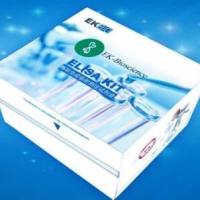Methods for Evaluation of Positive Allosteric Modulators of Glutamate AMPA Receptors
互联网
669
Hypofunctioning of glutamate synaptic transmission in the central nervous system (CNS) has been proposed as a factor that may contribute to cognitive deficits associated with various neurological and psychiatric disorders. Positive allosteric modulation of the α-amino-3-hydroxy-5-methyl-4-isoxazoleproprionic acid (AMPA) subtype of glutamate receptors has been proposed as a novel therapeutic approach, because these receptors mediate the majority of rapid excitatory neurotransmission and are intimately involved in long-term changes in synaptic plasticity thought to underlie mnemonic processing. By definition, positive allosteric modulators do not affect AMPA receptor activity alone but can markedly enhance ion flux through the ion channel pore in the presence of bound agonist. Despite this commonality, positive allosteric modulators can be segregated on the basis of the preferential effects on AMPA receptor subunits, their alternatively spliced variants and/or their biophysical mechanism of action. This chapter provides a detailed description of the methodologies used to evaluate the potency/efficacy and biophysical mechanism of action of positive allosteric modulators of AMPA receptors.









